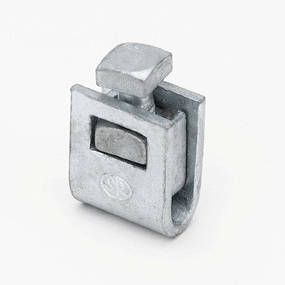
A b strand ground anchor is a component used for grounding in overhead transmission lines. It is also known as a messenger strand camp. it helps provide a secure and low resistance connection between two structures. This may be between the metallic messenger strand and the grounding system. It also helps to maintain the electrical safety and reliability of the infrastructure. B strand ground clamp helps in safeguarding power infrastructure against lightning strikes and fault currents in Southeast Asia. It is from materials that are high-quality and durable. These materials help to ensure longevity and resistance to environmental conditions. Common types of b strand ground clamps include bolted, compression, parallel groove clamps and cable to b strand clamps. They find use in applications such as lightning protection, grounding, substation, telecommunication lines and grounding for street lighting.
Key features of b stand ground clamp
B strand ground clamps have designs that securely connects the grounding conductor to metallic messenger strand. It has specific features that help to provide resistance between the two connection points. They also ensure safety and protection of equipment, personnel and the electrical infrastructure. The following are the key features of the b strand ground clamp.
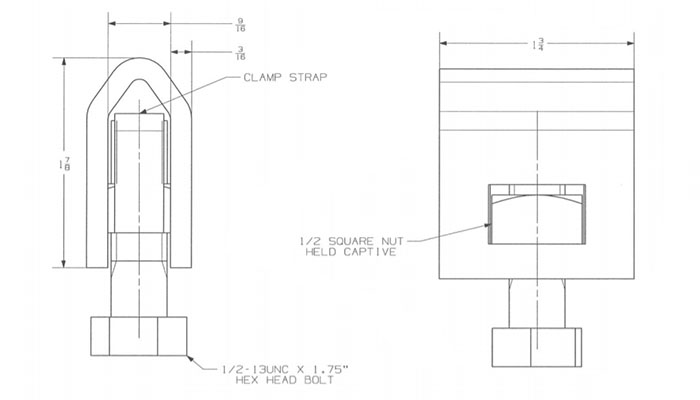
- Materials – they are from high quality materials that resist corrosion and rust. They help ensure longevity, performance and application in various industries.
- Compression mechanism – the compression mechanism creates a tight connection with the messenger strand. This helps to ensure a strong, vibration-resistant bond with the structure.
- Corrosion resistance – the corrosion resistance materials ensure the clamp remains effective in outdoor and harsh environments.
- Secure connection – the clamps provide a secure and low resistance connection between the grounding anchor and the messenger hanger.
- Easy installation – b strand ground anchor offers easy installations with minimal hand tools and effort.
- Compatibility – the clamps are compatible with a range of grounding conductors such as copper and aluminum wires.
- Reliable grounding – they help maintain reliable grounding for electrical and communication systems. this helps to enhance safety and equipment protection in overhead transmission lines.
- Compliance with standards – the clamps should comply with industry standards and regulations to ensure effectiveness.
- Versatility – the clamps are applicable in various applications in the industry including utility poles, substations, telecommunications and industrial settings.
Selection and installation of b strand ground anchor
Proper selection of the b strand ground clamp ensures a reliable and effective grounding system to the application. the selection process involves considering several factors such as conductor size and type, corrosion resistance, adjustability, application, safety features and costs. The proper installation ensures a low-resistance connection between the grounding conductor and the metallic messenger strand. The following is a basic installation process of the b strand ground anchor.
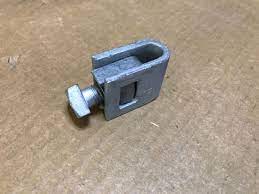
- Safety precautions – follow all the safety protocols and wear suitable personal protective equipment.
- Preparation – inspect the clamp to ensure it is free from dirt, debris, rust or other contaminants. Clean the surface using an abrasive pad to create a clean and conductive surface.
- Selection – select a b strand clamp that is compatible with the size and type of messenger strand and grounding conductor.
- Prepare the grounding conductor – ensure the conductor is clean and free from corrosion.
- Positioning – position the clamp at the desired location for grounding and ensure the proper orientation.
- Securing – use an appropriate wrench to secure the b strand ground clamp in place. Tighten it to achieve good metal-to-metal contact with the messenger strand.
- Attachment – insert the grounding conductor into the clamp’s conductor groove or connector. Tighten the clamp’s connector to establish a low-resistance connection between the grounding conductor.
- Torque verification – use a wrench to ensure that the clamp is tight to the manufacturer’s recommendation.
- Inspection – conduct a final inspection to ensure the clamp is securely installed and the grounding anchor is properly connected.
- Documentation – keep detailed records of the installation including date, location and details of the b strand ground clamp used.
Maintenance and inspection of b strand ground clamp
Proper maintenance and inspection ensure the continued reliability of grounding systems for overhead transmission lines. It also helps identify issues early on and prevent potential problems. Additionally, properly maintained grounding systems help protect equipment, personnel and the electrical infrastructure from electrical faults. The following is a basic guide for maintenance and inspection of b strand ground clamp.
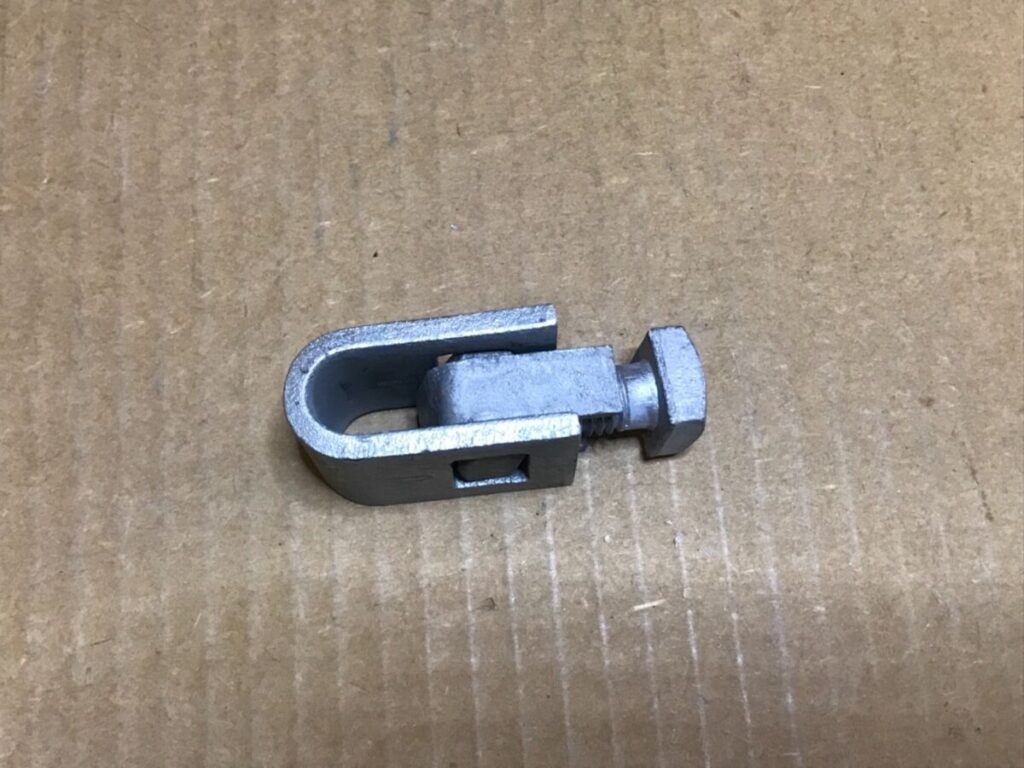
- Conduct regular visual inspections of the clamp to identify visible signs of damage, corrosion or wear. Check for loose bolts, nuts and connectors for signs of movement.
- Inspect the grounding conductor and ensure it is securely attached to the clamp for good contact.
- Check for corrosion on both the clamp and the messenger strand. Clean the clamp using an abrasive material and apply anticorrosion compound.
- Ensure the bolts and nuts are properly tightened and ensure there is no excessive movement in the clamp.
- Check there is good electrical continuity between the grounding conductor and the clamp.
- Replace or repair any damaged or corroded clamps to ensure the continued performance of the application.
- Keep detailed records of all inspections including dates, locations and findings.
Comparative analysis of b strand ground clamp in Southeast Asia
This process involves evaluating and assessing different aspects of clamps to select the most suitable one. This includes assessing the design, materials, features and performance of the b strand ground clamp. Proper selection of the clamp will ensure a reliable and effective grounding system for overhead transmission lines. the following are the key factors to include in the comparative analysis in southeast Asia.
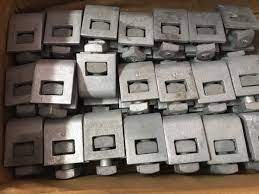
- Material – compare the materials used in b strand ground clamps and assess the corrosion resistance. Consider the southeast Asian varying climates and coastal regions.
- Design – check the design of the clamps and their adjustability looking for clamps that accommodate a range of messenger strand and size.
- Ease of installation – analyze the installation process of each clamp considering the clamps are easy to install.
- Compliance with standards – ensure the selected b strand ground camp complies with standards and regulations.
- Cost effectiveness – compare the prices of the clamp from different manufacturers. Balance the quality and performance.
- Compatibility – check whether the selected clamp is compatible with accessories such as grounding conductors, connectors and lugs.
Certifications and standards in Southeast Asia
Certifications and standards in Southeast Asia vary by country and are mainly regulated by national or regional bodies. Additionally, it is advisable to consult with local authorities, government agencies and industry associations. The following are the common standards and certifications for b strand ground clamps in Southeast Asia.
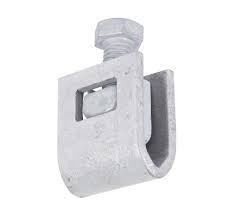
- IEC standards – these are global standards for electrical and electronic technologies to ensure compliance with best practices.
- ASTM standards – these standards relate to materials and testing of the b strand ground clamp.
- Local electrical codes – each country has its own electrical codes and regulations that specify the requirements for grounding and bonding.
- ISO certifications – this indicates adherence to quality management and manufacturing standards.
- Manufacturer’s specifications – the manufacturer may provide specifications and guidelines for their products.
- Industry associations – these may offer guidelines and best practices for grounding systems and components.
- Local utility standards – power distribution companies may have their own internal standards and specifications for grounding systems.
Regional market for b strand ground clamp in Southeast Asia
There are various factors that shape the regional market for b strand ground clamps in Southeast Asia. The clamps help to ensure the safety, reliability and proper functioning of transmission lines. Also, it is advisable for manufacturers and suppliers to observe the trending aspects of the market. This helps ensure their success in the market for b strand ground clamps. The following are the factors that influence the market for regional market for b strand ground clamps.
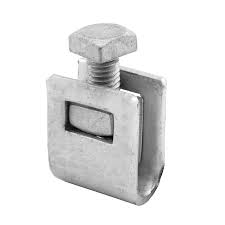
- Power grid expansion – the development and expansion of the electrical grid in Southeast Asia leads to increased demand of the clamp. The clamps help to protect against electrical faults and lightning strikes.
- Telecommunications growth – expansion of the telecommunication networks helps to meet the rising demand for internet. They use b strand ground anchors to ensure proper grounding of communication cables.
- Local manufacturing – the growth of local manufacturers of the clamps offers a range of products with varying features and materials.
- Maintenance and replacements – the need for maintenance, repair and replacement of grounding components lead to increased demand of the clamp.
- Renewable energy projects – grounding systems work in renewable energy sources such as solar and wind power.
- Safety regulations – local safety and electrical codes require proper grounding f electrical and telecommunication infrastructure. This leads to the growing demand of b strand ground clamps.
Frequently asked questions
A b-strand ground clamp is a component used to establish a secure and low-resistance connection between the metallic messenger strand and the grounding system. Its function is to ensure the safety and proper functioning of the electrical infrastructure.
B strand ground clamps are from materials such as aluminum or copper that offer corrosion resistance and electrical conductivity. The selection of material is important since it affects the clamps durability and effectiveness in Southeast Asia’s diverse environmental conditions.